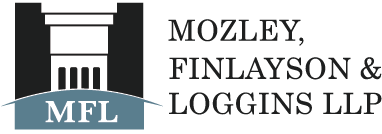
With Governors and Mayors announcing their respective phased approaches to reopening their States’ economies, employers need to carefully plan for how they will resume operations in a safe and legally compliant manner given the challenges of our new COVID-19 reality. The following checklist provides a framework of issues and tasks that all employers should consider addressing and whether to implement before reopening their doors for their employees and customers. For more information on these issues specifically tailored for your business, including additional steps to take to prepare for reopening your workplace, please contact us directly through our website at www.mfllaw.com.
If you have questions about the issues raised here, please contact any of the attorneys in our Labor & Employment Practice Group.

We offer a wide spectrum of legal services tailored to meet the specific needs of our clients.
Begin your consultation and take the first step towards resolving your legal concerns.
1050 Crown Pointe Parkway
Suite 1500
Atlanta, GA 30338
Phone: 404-256-0700
Fax: 404-250-9355
(inside Serendipity Labs)
100 North Point Center East,
Suite 125
Alpharetta, GA 30022
Phone: 678-222-2170
Fax: 404-250-9355
(inside Serendipity Labs)
3225 Cumberland Boulevard,
Suite 100
Atlanta, GA 30339
Phone: 404-256-0700
Fax: 404-250-9355
3225 Shallowford Road NE,
Suite 1200
Marietta, GA 30062
Phone: 770-509-6565
Fax: 404-250-9355
4767 New Broad Street
Orlando, FL 32814
Phone: 407-514-2765
Fax: 404-250-9355
| Privacy Policy | Accessibility Statement | Powered by WT Digital Agency